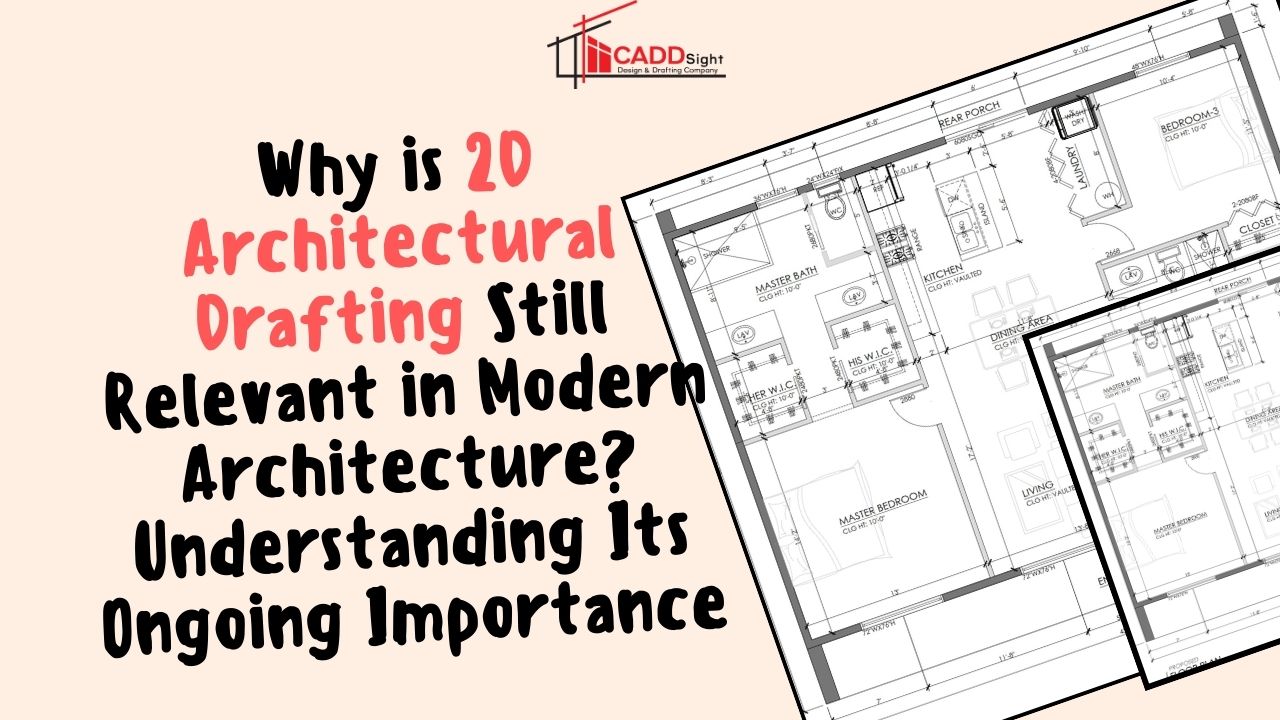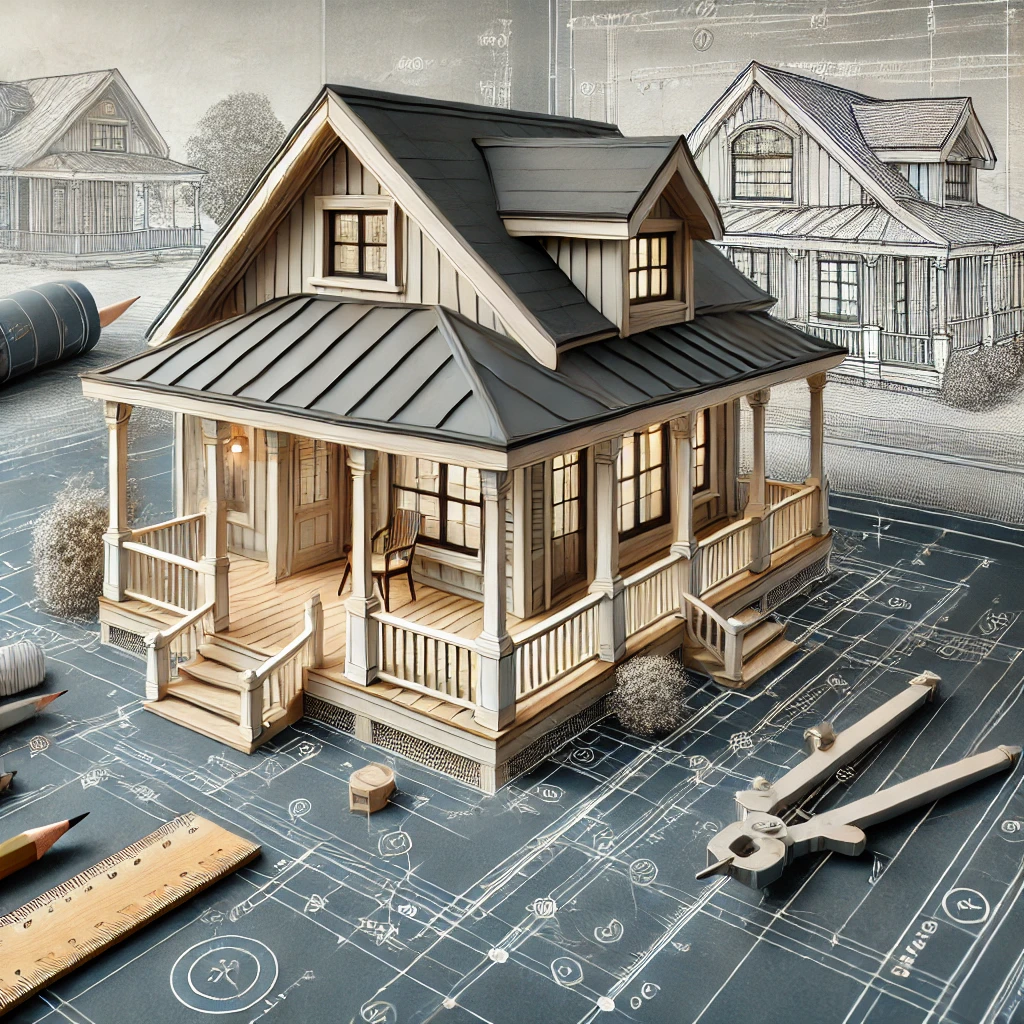In the ever-evolving world of architecture, where 3D modeling and Building Information Modeling (BIM) are becoming industry standards, one might wonder: In every case, when it is discussed AutoCAD, the first thing that comes to one’s mind is 2D drafting. However, all these smart tools are very helpful, 2D drafting is not a small contribution in the development of architecture projects.
In this blog post we will discuss the necessity of 2D architectural drafting in architectural layouts and why it is still necessary despite the fact that the field is gradually moving to the use of computers and other forms of technologies.

Introduction: The relevance of 2D architectural drafting for architects
Architecture has now become one of the highly emerging fields where the tools and the techniques used to design a structure have changed a lot. Technological advancement has for long played a role in how architectural projects are planned and implemented starting from the most primitive method of drawing the buildings on paper to the most advanced methods of making three-dimensional models. Nevertheless, with advanced software tools and the move to 3D modeling, 2D drafting still is a vital component of the general design strategy.
But why is 2D drafting relevance in architectural drawings still critical in the contemporary world? The essence of the following question lies in the focus of our current conversation, namely, the continued relevance of 2D drafting in diverse architectural settings.
The Foundation of Architectural Drawings: Why 2D Architectural Drafting Stands The Test?
Simplicity and Clarity
Another that makes 2D drafting relevant to this day is that it is easy, and in the spirit of keeping it simple, it is the best. Due to its simple visual layout, 2D drawings are easy to read and comprehend for all the viewers, clients, contractors, and engineers who are using architectural plans. Still, 3D models in comparison with 2D drawings can provide too much information and be quite confusing; meanwhile, 2D drawings provide clear structure and scale of the project. This is especially important in the beginning of the project when all the relationships must be well-defined.
Cost-Effectiveness and Efficiency
Two dimension drafting is also cheaper and time saving in some circumstances. Generating a primary or a full and complete stereoscopic model is relatively slower for some projects or for some parts of the project and it needs many resources to complete. However, 2D drawings are easier, faster, and cheaper to create and are appropriate for initial design ideas, permit submissions, and construction phase. Moreover, when changes are called for in a project for instance daily or hourly, the 2D drafting can be done without necessarily undertaking a redesign of already done 3D models.
With Caddsight, take your 2D and 3D design and drafting services to the next level.
Versatility in the Architectural Drafting Applications
Construction Documentation
Application of 2D drafting is probably most essential when creating construction documents. They contain a lot of specifics as to the measure of distance, types of materials, and how structures should be put up or assembled in the construction process. Thus, 3D models being rather informative sometimes must be translated into 2D plans and sections when specific technical details must be perceived. These architectural drawing types are mostly drawn in a 2D format so that all viable angles of the construction process are well documented and can be easily understood.
Regulatory Compliance and Permits
Getting permits and following the set regulations are always part of the architectural projects. Most of the local authorities and the regulatory agencies have not phased out 2D drawings; therefore, they are still expected to submit them. Such drawings are adopted to ensure that the project complies with the zonal regulations, construction laws, and safety specifications. In 2D drafting the visualization is simple and the designs are clear, it does not require a lot of thinking and this makes officials approve and issue permits quickly.
Integration of 2D Architectural Drafting with Modern Technology
Interoperability with 3D Models
Even though 2D drafting appears to be outdated in comparison with the abilities of 3D modeling, it extends the features of the modern tools. Many of the currently available Computer-Aided Design (CAD) applications facilitate the possibility to work with both 2D and 3D formats, which means architects can draw both 2D and 3D designs at once. This interconnection makes sure that the elements contained within the 2D drawings remain up to date and in sync with the more elaborate 3D models, giving a full round view of the project at different angles
Ease of Sharing and Collaboration
Thus, a 2D drawing’s simplicity and shareability also remain pertinent in the era of digital cooperation. 2D CAD files can be also less bulky in size in contrast to large 3D models and that is why they can be successfully used with clients, contractors, and other interested parties. Further, many of the professionals in the particular industry are sensitised to the 2D plan reading and analysis that make the interactions and collaborations throughout the project life cycle much more comfortable.
Conclusion
2D designs are cost-efficient, easy to use and thus form an essential component of various architectural designing tasks right through the design development stage, construction, and documentation, to include compliance issues. While 2D drafting will always remain a vital component of the architect’s tool kit no matter the development of technology, it remains especially critical in the documentation and clear communication of projects’ designing and implementation.
Thus, it is assessable that in the future, 2D drafting will still remain an essential concept in architectural practice that is inextricably linked with tradition but it is advancing in line with the modern trends in architecture.
Use Our Architectural & Structural Drafting Services




หลุดไลสด
October 1, 2024This is a topic that’s near to my heart…
Best wishes! Where are your contact details though?
Caddsight
October 2, 2024I really appreciate it.
You can contact;
+1 305 882 3730
cadconsult55@gmail.com